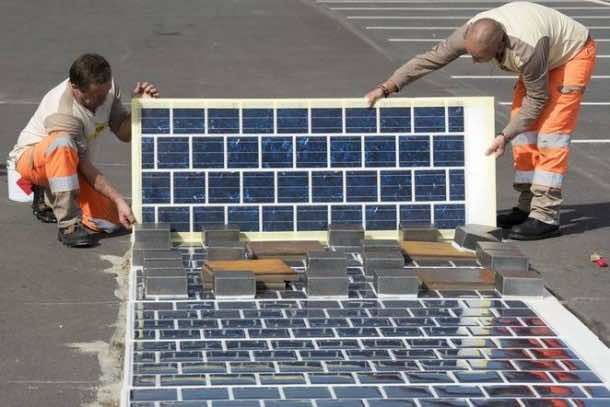The idea of utilizing solar power using solar roads isn’t a new one but lacked any feasible and practical design until now. The French Government has recently announced that it has planned to construct a 1,000 km stretch of solar roads in the next half decade. As per the statement, this will supply power to about 5 million persons. Years of research collaboration between INES, France’s National Institute for Solar Energy, and Colas, a transport company, have proven to be fruitful in the form of a new thin solar panel roadway surface that has been named as Wattaway.
Did you know that roadways are only occupied by cars 10% of the time? Colas is of the belief that this allows for a huge potential of power production. The Wattaway doesn’t need to replace roads but rather installs on the existing roadways. It features tile-like panels that can be laid directly onto the existing road’s surface. It is only 7mm thick and has been built using layers of material that are designed to impart more traction to the car.
Colas has carried out extensive testing of the solar road surface and claims that it will be able to serve for a total of 20 years under normal road traffic. As per the company, 20 sq. meters of the tiles provide enough energy to power an average French home. This means that for every km of Wattaway, 5000 homes can be powered using the energy that is generated.
Apart from its other abilities, it is capable of withstanding seasonal snowplowing and is waterproof. Each panel has been constructed using a film of polycrystalline silicon that has been coated in a resin substrate, thus imparting protection to the photovoltaic cells. Colas also claims that due to the increased traction, less accidents are likely to take place on the new road surface.



Is coating resin material able to sustain such pressure of large vehicles .